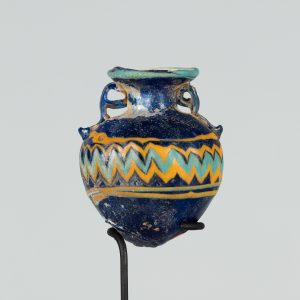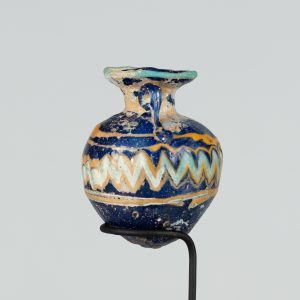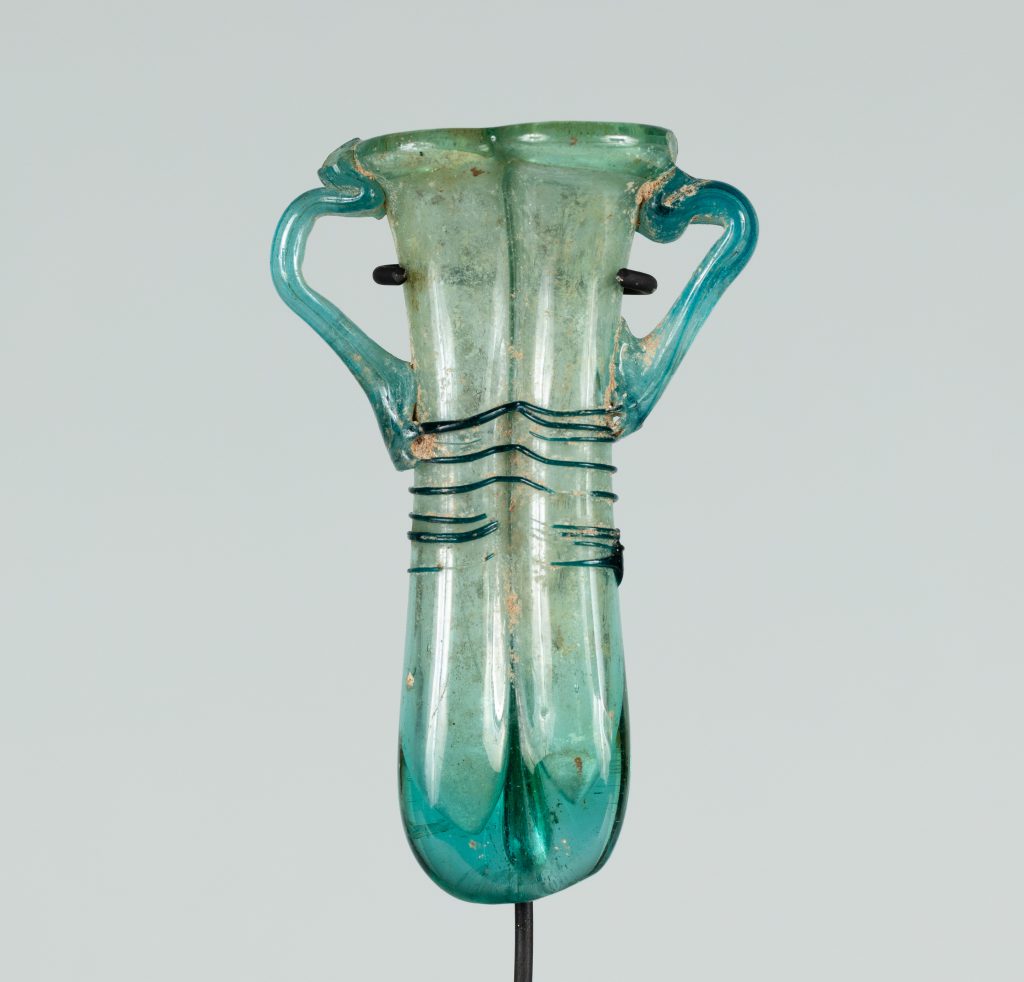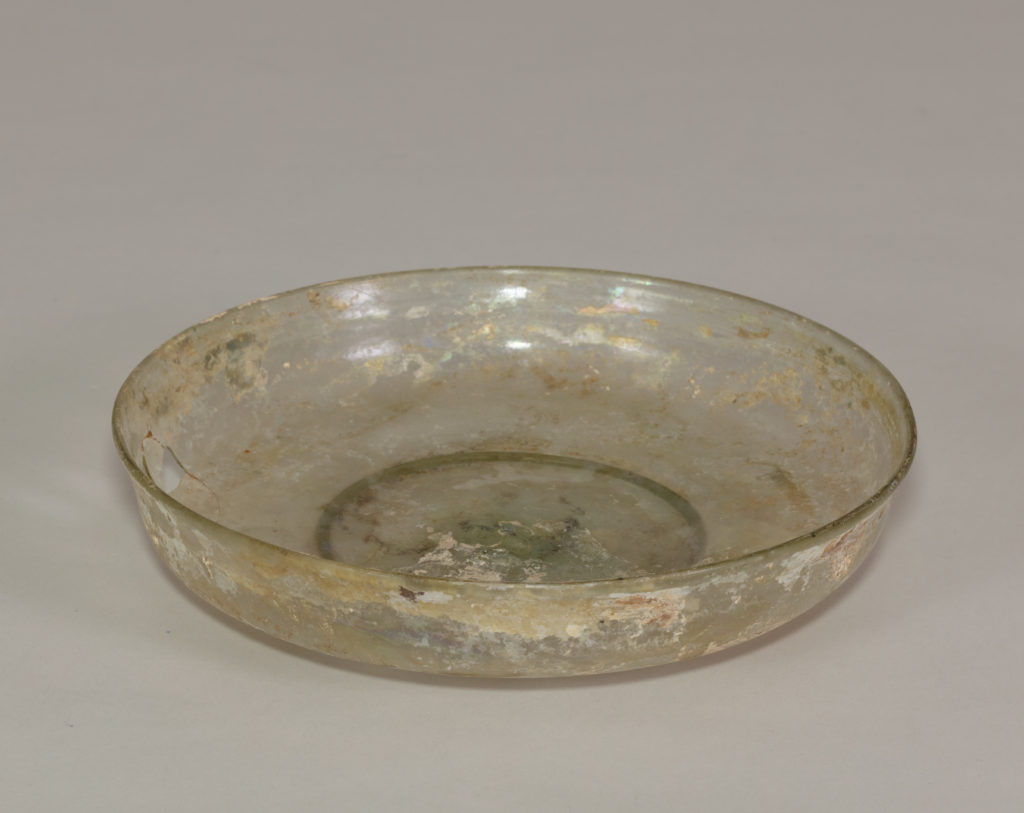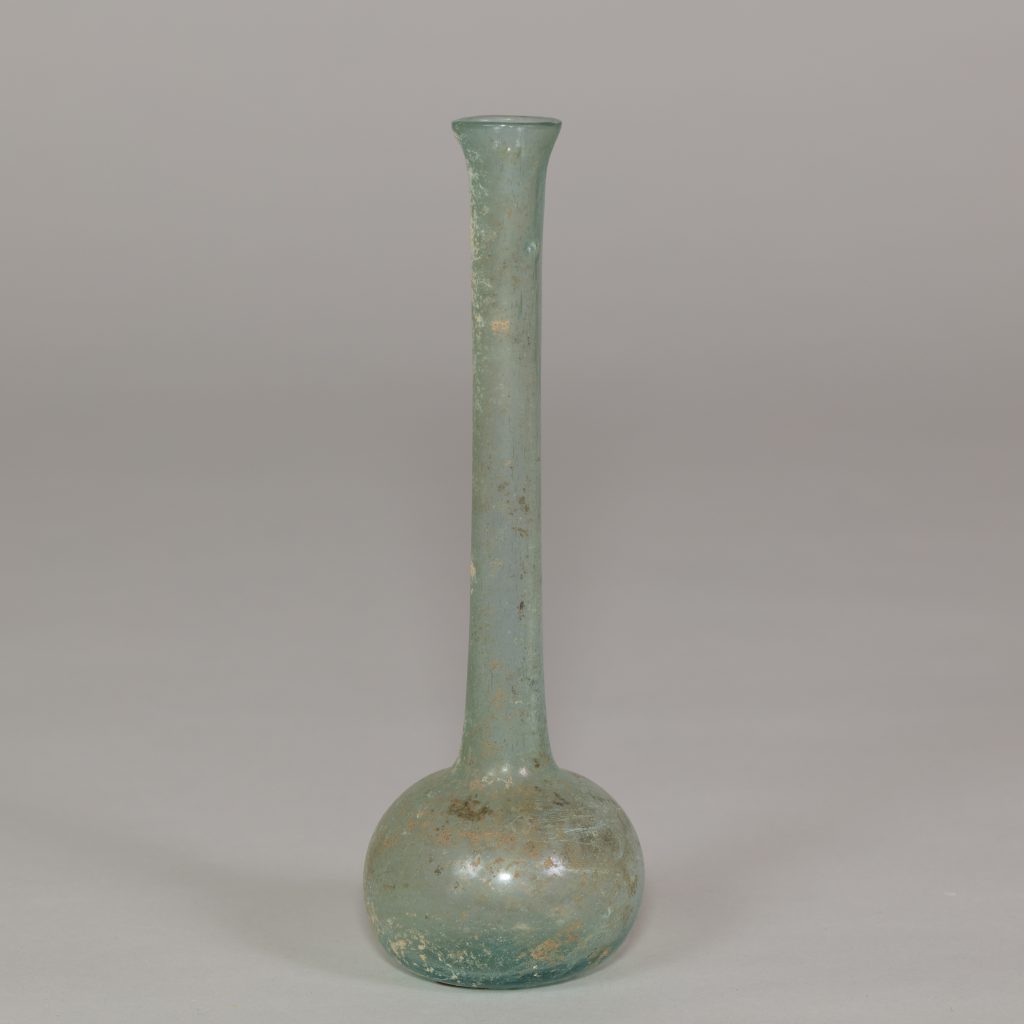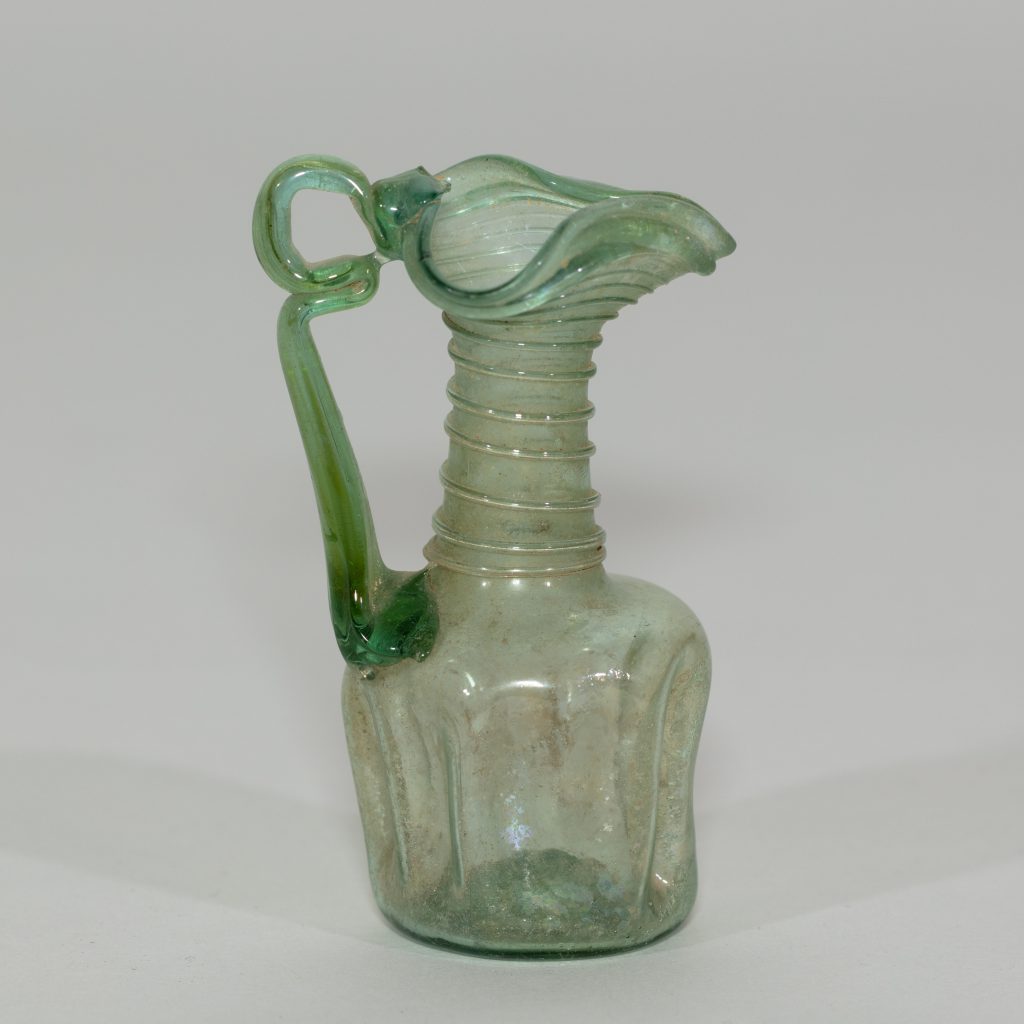
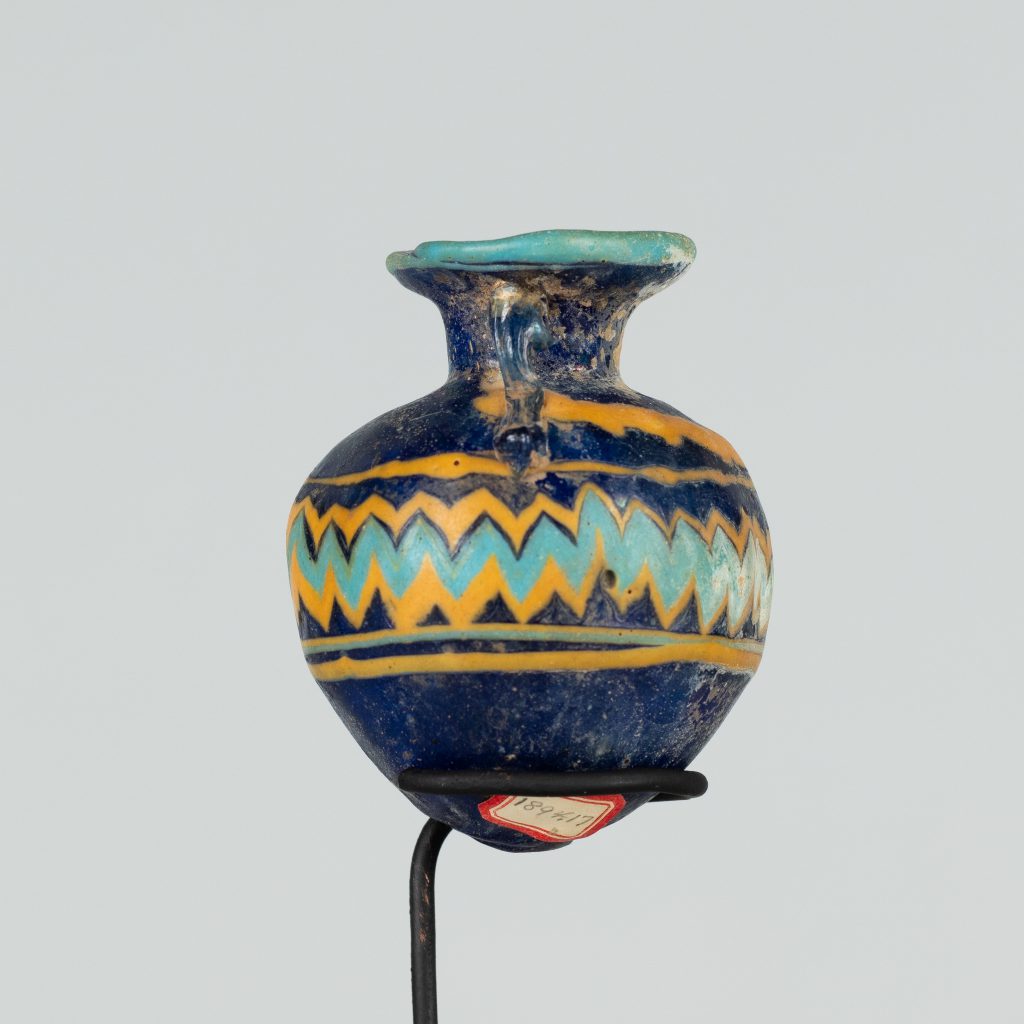

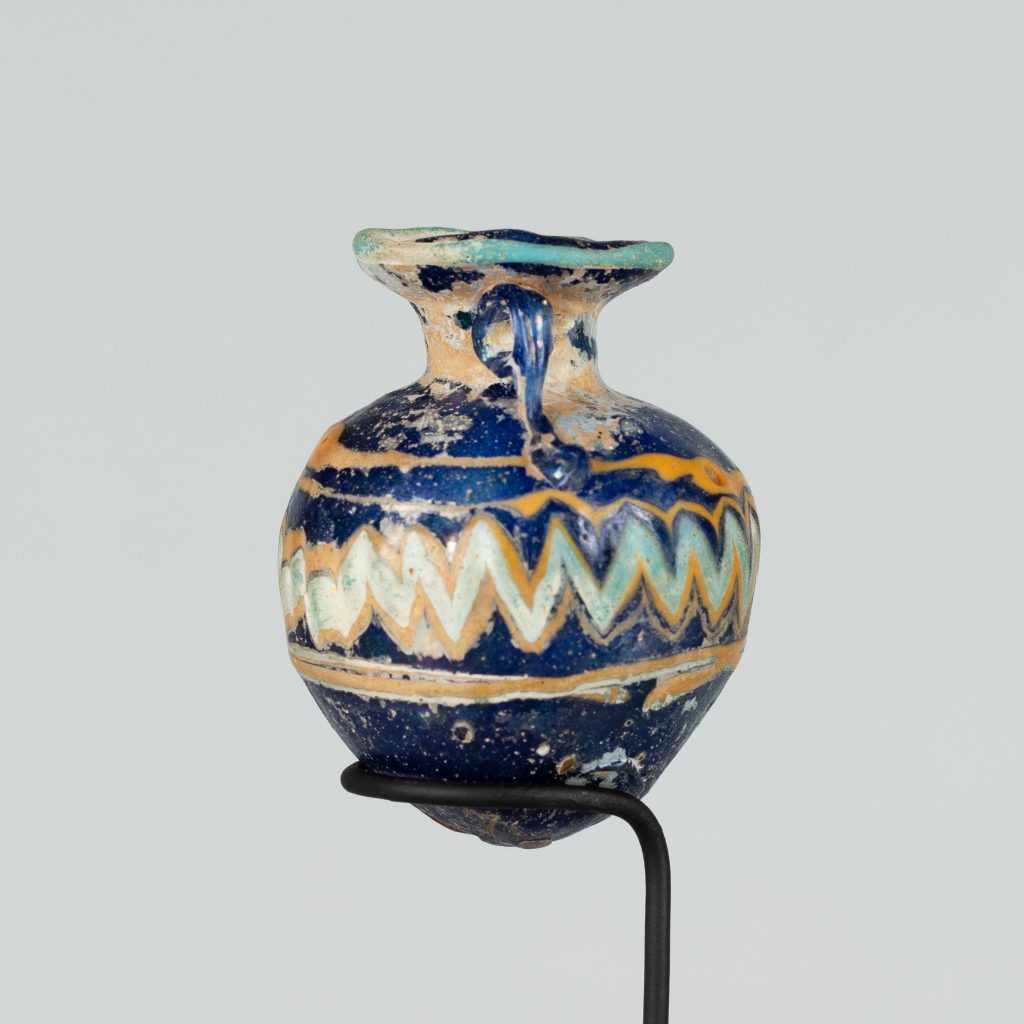
Gift of the Misses Harriet Sarah and Mary Sophia Walker
1894.17One of the oldest glass vessels in the Museum’s collection, this piece is an example of the earliest technology used to produce glass in the ancient Mediterranean: the core-formed technique. This technique emerged in the second millennium in both Egypt and Mesopotamia. Molten glass was wrapped or draped around a clay form, with decoration applied using colored glass rods that would be rolled and flattened. Blue glass was most common, with yellow used as a frequent accent as in this example. The handles of this small aryballos, a vessel used for containing precious liquids like perfumes, would have been applied as a secondary process. Similar core-formed vessels, used to store perfumes used in funerary rites and then deposited in tombs, were common in the Greek world from the sixth century forward. The core-forming technique remained the predominant method of producing glass vessels until the Roman period, when the technology for blown glass was invented.
This vessel is one of thirty-seven glass vessels donated by the sisters Mary Sophia (1839–1904) and Harriet Sarah Walker (1844–1898), on the completion of the Walker Art Building in 1894. The success of the project was indebted to the sisters’ vision of a building devoted “solely to art purposes,” their selection of the architect Charles McKim, and their deep involvement with every aspect of the building’s design. Recognizing the need for art objects of exceptional quality for students at Bowdoin to study, the sisters seeded the Museum collections with many important gifts, both from their own collections and newly acquired works for the occasion.
The glass vessels the sisters acquired for the Museum fall into the latter category and were purchased from the Thomas B. Clarke Fine Arts gallery in New York City. They were reported to be from three sources: German excavations at Limassol in Cyprus in the 1880s, the excavations of Alessandro Palma di Cesnola, also on Cyprus, and from local (unexcavated) collections in and around the city of Tyre in Lebanon. As such, the Walker glass collection represents an excellent cross-section of ancient glass arts, particularly of Roman glass production in the eastern Mediterranean.
Before 1894, likely excavated in Greece, possibly Rhodes; 1894, sold to Mary Sophia Walker by a Mr. Morgan on behalf of the Thomas B. Clarke Fine Arts Gallery, New York; 1894, acquired by the Bowdoin College Museum of Art, gift from Harriet Sarah and Mary Sophia Walker, Brunswick.
Collector
Donors of the Walker Art Building as well as a significant collection of art and antiquities, Mary Sophia Walker (1839–1904) and Harriet Sarah Walker (1844–1898) were among the most significant benefactors in the development of the art collection at Bowdoin.
